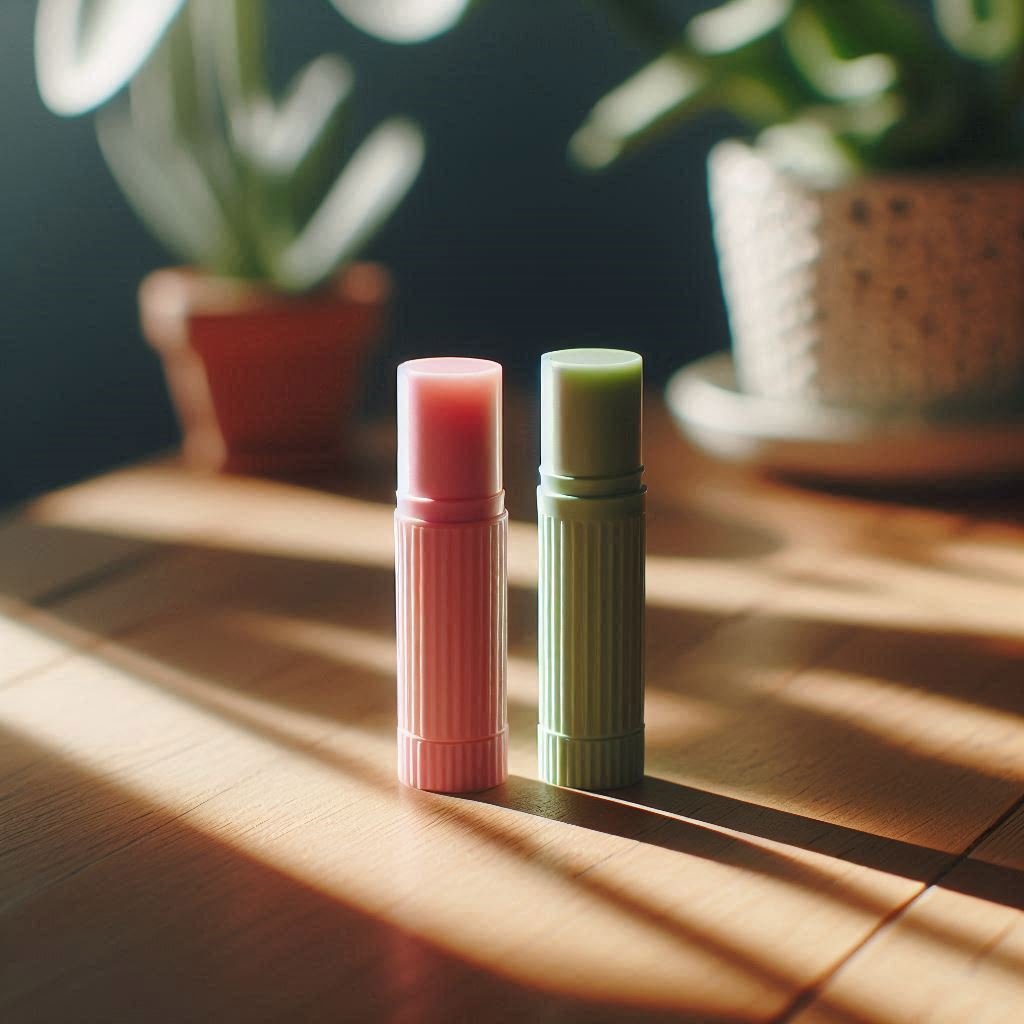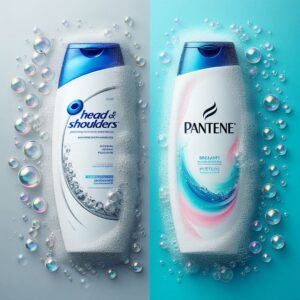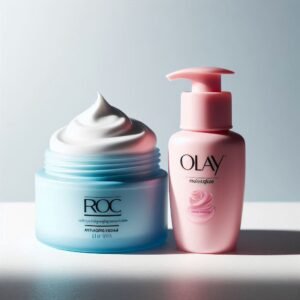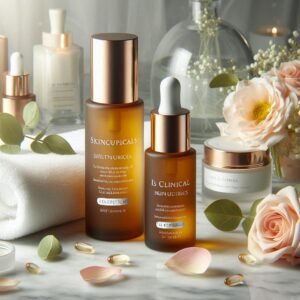Vaseline Vs Chapstick 2024 – As you reach for a lip balm to soothe your dry, chapped lips, you’re faced with a familiar dilemma: Vaseline or Chapstick? Both brands have their loyal followings, but what really sets them apart? You’ve likely tried one or both, but have you ever stopped to think about the ingredients, benefits, and potential drawbacks of each?
From moisturizing properties to skin allergy concerns, there’s more to ponder than just flavor and texture. Let’s take a closer look at the details that’ll help you make an informed decision about which one is right for you.
A Quick Overview
- Vaseline’s petroleum-based formula provides long-lasting moisturizing, while Chapstick’s natural waxes offer a lighter, non-greasy feel.
- Vaseline is better suited for extremely dry lips, whereas Chapstick is ideal for everyday moisturizing and hydration.
- Skin type and allergy concerns should be considered when choosing between Vaseline and Chapstick, with Vaseline being more likely to irritate sensitive skin.
- Chapstick is generally more affordable, with prices starting from $1.50, while Vaseline’s premium pricing offers unique benefits like long-lasting moisturizing.
- Both brands offer a range of flavors and customization options, but Vaseline’s thicker consistency can feel heavy and artificial, whereas Chapstick provides a smooth, velvety texture.
History of Vaseline and Chapstick
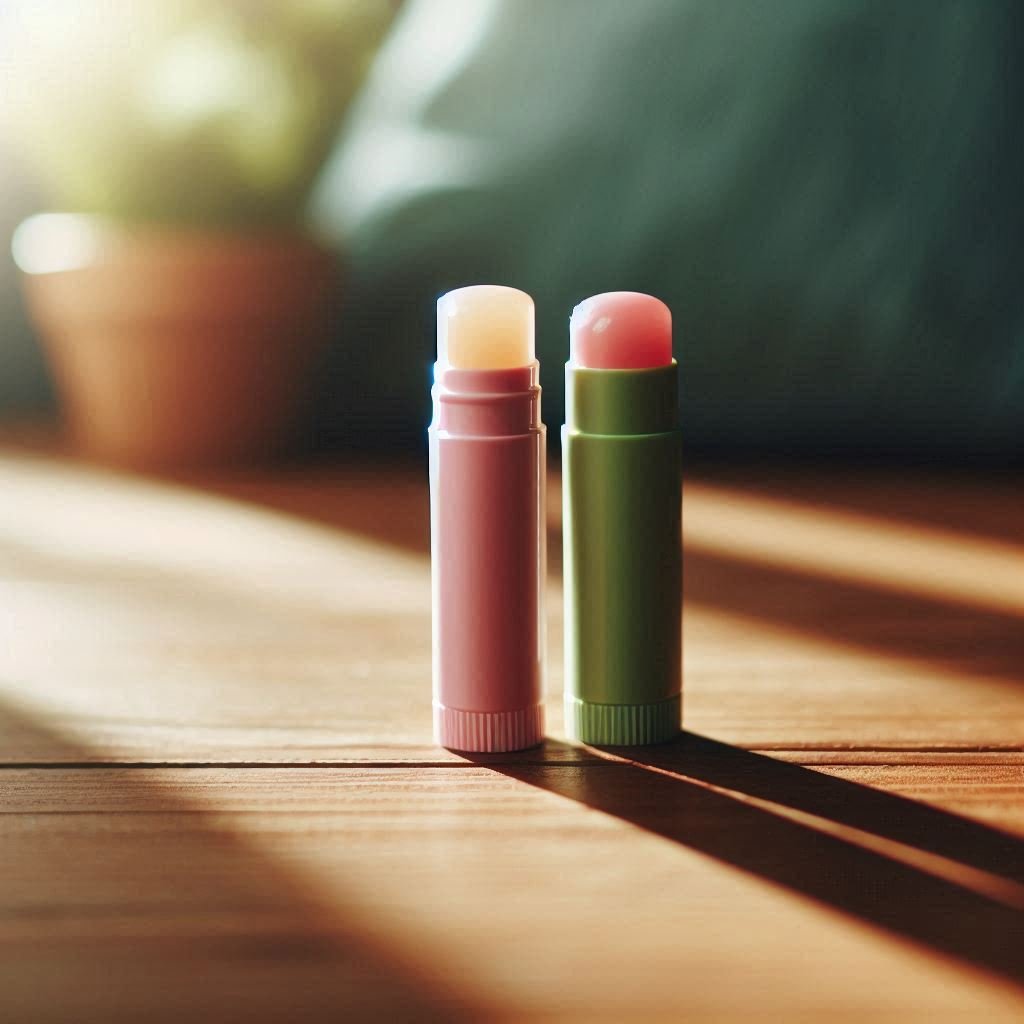
You’ve likely used both Vaseline and Chapstick to soothe and moisturize your dry, chapped lips, but have you ever wondered where these trusted lip balms originated?
Let’s take a step back and explore their early beginnings. Vaseline, created by Robert Chesebrough in 1870, was initially marketed as a petroleum-based product for skin protection.
Chapstick, on the other hand, was invented by Dr. Charles Browne Fleet in 1893, with its iconic cylindrical shape and vintage packaging.
Both products have since become household names, with Vaseline evolving to offer a range of skin and lip care products, and Chapstick expanding its line to include various flavors and ingredients.
Despite their differences, both brands have remained committed to providing effective lip care solutions for generations.
Key Ingredients Compared
When comparing the key ingredients of Vaseline and Chapstick, it’s clear that both brands prioritize moisturizing and soothing properties, but their formulations differ in some significant ways.
You’ll notice that Vaseline’s petroleum-based jelly consistency is thicker and more occlusive, locking in moisture for dry skin.
Chapstick, on the other hand, uses a blend of natural waxes and oils for a lighter, non-greasy feel.
When it comes to ingredient sourcing, Chapstick tends to opt for more natural and organic ingredients, whereas Vaseline relies on petroleum-based derivatives.
This difference in approach affects the overall texture and performance of each product.
As you weigh your options, consider what matters most to you: intense moisturizing or a more natural, gentle approach.
Moisturizing Properties
Both Vaseline and Chapstick offer moisturizing properties, but the intensity and duration of hydration differ markedly between the two, with Vaseline’s petroleum-based formula providing a more intense, long-lasting moisturizing effect.
When you apply Vaseline, its thick, occlusive layer locks in moisture, giving your lips an intense hydration boost.
Chapstick, on the other hand, uses humectant boosters to attract and retain moisture, resulting in a more subtle, yet still effective, lip hydration.
As you choose between the two, consider your lip hydration levels: if you have extremely dry lips, Vaseline might be the better bet.
But if you’re looking for a more subtle, everyday moisturizer, Chapstick could be the way to go.
Lip Protection Benefits
As you prioritize lip care, it’s clear that locking in moisture is just the first step – now it’s time to ponder how Vaseline and Chapstick protect your lips from external stressors and environmental factors that can dry them out. These lip care staples go beyond moisturizing to provide additional benefits that keep your lips healthy and happy.
Vaseline and Chapstick create a barrier that protects your lips from harsh weather conditions, preventing dryness and chapping. They shield your lips from wind and cold.
They help shield your lips from irritants like chemicals, fragrances, or spicy food that can dry out your lips. They defend against irritants.
Skin Allergy Concerns
When you’re deciding between Vaseline and Chapstick, it’s vital to weigh your skin type and potential allergy concerns.
You might be wondering what could trigger an allergic reaction or irritate your skin, especially if you have sensitive skin.
Let’s explore the risks of skin irritation, common allergic reaction triggers, and how these concerns impact sensitive skin types.
Skin Irritation Risks
You may experience skin irritation risks, such as redness, itching, or rashes, if you’re allergic to certain ingredients in Vaseline or Chapstick. When it comes to skin pH, both products can disrupt the natural balance, leading to irritation.
Three key factors bear examination:
- Irritation thresholds: Some ingredients, like petroleum jelly or fragrances, can push your skin over the edge, causing irritation.
- Skin pH: Vaseline has a pH level closer to the skin’s natural pH, while Chapstick can be more alkaline, potentially disrupting the skin’s natural barrier.
- Individual sensitivities: What works for someone else mightn’t work for you, so it’s crucial to monitor your skin’s response to these products.
Allergic Reaction Triggers
Beyond skin irritation risks, certain ingredients in Vaseline or Chapstick can trigger allergic reactions, which is why it’s vital to identify your personal skin allergy concerns.
You might be wondering what could cause an allergic reaction. Well, fragrance culprits are a common offender. Artificial fragrances can exacerbate skin sensitivity, leading to redness, itchiness, and even hives.
If you have skin sensitivity, it’s paramount to opt for fragrance-free products or those with natural fragrances. Always check the ingredient list before making a purchase.
You might also want to do a patch test to guarantee you’re not allergic to any new ingredients. By being mindful of your skin’s unique needs, you can minimize the risk of an allergic reaction and keep your skin healthy and happy.
Sensitive Skin Types
Many people with sensitive skin types struggle to find the right lip balm, as their skin tends to react adversely to certain ingredients. You’re not alone if you experience itching, redness, or swelling after applying a new lip balm.
To avoid these skin triggers, guarantee that you opt for gentle alternatives.
Avoid harsh chemicals: Steer clear of lip balms containing artificial fragrances, dyes, or preservatives that can irritate your skin.
Opt for natural ingredients: Look for lip balms with natural ingredients like beeswax, coconut oil, or shea butter that are gentle on your skin.
Patch test before committing: Always test a new lip balm on a small area of your skin before applying it to your lips to verify you don’t react to any ingredients.
Petroleum Jelly Vs Natural Waxes
As you explore the differences between Vaseline and Chapstick, you’ll want to ponder the type of waxes used in each.
You’re probably wondering whether petroleum jelly or natural waxes are better for your skin, and that’s exactly what we’re about to break down.
Let’s examine how these waxes impact your skin’s natural moisture barrier, and what that means for your skin health.
Natural Moisture Barrier
You rely on a natural moisture barrier to lock in hydration and protect your skin from the elements, but have you ever stopped to think about what’s actually creating that barrier – petroleum jelly or natural waxes? The difference is vital, especially when it comes to lip hydration.
Hydrating properties: Petroleum jelly creates a barrier that locks in moisture, but it can also suffocate the skin, preventing it from breathing and releasing toxins. Natural waxes, on the other hand, allow for a healthy exchange of oxygen and moisture.
Lip hydration: Natural waxes, such as beeswax and carnauba wax, provide long-lasting lip hydration without clogging pores. Petroleum jelly, while providing temporary relief, can lead to dry, chapped lips in the long run.
Skin health: Natural waxes promote healthy skin by allowing it to function naturally, while petroleum jelly can disrupt the skin’s natural balance. Choose wisely for a healthier, happier you!
Synthetic Vs Organic
When it comes to choosing between Vaseline and chapstick, the type of ingredients used can greatly impact the health of your lips, and it’s time to examine the benefits of synthetic petroleum jelly versus organic natural waxes.
As you weigh your options, consider the synthetic risks associated with petroleum jelly. It can create a barrier that prevents your lips from breathing, leading to dryness and irritation.
On the other hand, organic natural waxes like beeswax, coconut oil, and shea butter offer a range of benefits. They moisturize and nourish your lips, promoting healthy skin and a natural glow.
Waxy Texture Comparison
The waxy texture of petroleum jelly and natural waxes is where their differences become particularly apparent, with petroleum jelly often leaving a greasy, suffocating film on your lips, whereas natural waxes provide a lightweight, non-greasy barrier that feels comfortable and natural.
When it comes to texture preferences, you might find that petroleum jelly can feel heavy and artificial, leaving a residue that’s hard to shake off.
Natural waxes, like beeswax or carnauba wax, offer a smooth, velvety texture that’s gentle on your lips.
The right waxy sensation for you depends on your personal comfort level with texture and how you want your lips to feel.
Ultimately, the choice between petroleum jelly and natural waxes comes down to your individual preferences and what you’re looking for in a lip balm.
Do you prioritize a lightweight, natural feel or a thicker, more protective barrier?
SPF and Sun Protection
Sunscreen-grade protection is built into some lip balms, offering a crucial layer of defense against UV rays that can cause lip chapping and skin cancer.
As you choose a lip balm, don’t fall for common sunscreen myths, such as thinking a high SPF guarantees total protection.
The truth is, SPF only measures protection against UVB rays, leaving you vulnerable to UVA damage.
Look for lip balms with broad-spectrum protection, which shields against both UVA and UVB rays.
Be aware of UV protection myths, too – just because a lip balm has SPF doesn’t mean it’s waterproof or sweat-resistant.
Always reapply after swimming or exercising to secure continuous protection.
Flavors and Varieties Available
As you consider Vaseline and Chapstick, you’ll want to think about the flavors and varieties that appeal to you.
Both brands offer a range of options, from classic unscented to fruity and sweet, so it’s worth exploring what’s available.
Let’s break down the flavor options and variety of formulations to see which one best fits your needs.
Flavor Options Compared
You’re spoiled for choice when it comes to flavor options, with both Vaseline and Chapstick offering a wide range of varieties to tantalize your taste buds. When it comes to satisfying your taste preferences, you’ll find that both brands cater to diverse flavor profiles.
Three key flavor options to ponder:
- Fruity flavors: Vaseline offers a range of fruity flavors like strawberry, blueberry, and raspberry, while Chapstick has options like cherry and orange.
- Minty freshness: Both brands offer minty flavors, with Vaseline’s Lip Therapy with Aloe and Chapstick’s Total Hydration 24 with mint.
- Classic originals: If you prefer a neutral taste, both brands offer original or unscented options that are gentle on your lips.
Ultimately, the choice between Vaseline and Chapstick comes down to your personal taste preferences and the flavor profiles that appeal to you.
Variety of Formulations
When exploring the variety of formulations, you’ll discover that both Vaseline and Chapstick offer a diverse range of products that cater to different lip care needs and preferences.
From classic petroleum-based formulas to organic and natural options, each brand provides a spectrum of choices to suit your unique formulation preferences.
Whether you’re looking for intense moisturizing, soothing relief, or long-lasting protection, you’ll find a product that fits your needs.
Additionally, both brands offer product customization options, allowing you to tailor your lip care routine to your individual skin type and concerns.
With such a wide range of formulations available, you’re bound to find the perfect match for your lips.
Price Comparison and Value
When it comes to budget friendliness, Chapstick is generally the more cost-effective option, with prices starting from around $1.50.
Vaseline, on the other hand, tends to be pricier, with some products costing upwards of $5.
Three key price comparison points to ponder:
- Chapstick’s affordability: With a wide range of products under $3, Chapstick is a great option for those on a tight budget.
- Vaseline’s premium pricing: Some Vaseline products, like their lip therapy range, come with a higher price tag, but offer unique benefits like long-lasting moisturizing.
- Value for money: While Chapstick may be cheaper, Vaseline’s formulations often provide longer-lasting results, making it a more cost-effective option in the long run.
User Reviews and Ratings
Dig into online reviews and ratings, and you’ll find that both Vaseline and Chapstick have their loyal followings, with users raving about their favorite products.
You’ll notice a strong sense of lip balm loyalty, with many users swearing by one brand over the other.
However, when you take a closer look, you’ll find that rating inconsistencies are common.
Some users rave about a product, giving it five stars, while others give it only one or two.
This disparity can make it difficult to get an accurate sense of which product is truly better.
As you read through reviews, keep an eye out for comments about specific features, like moisturizing power or flavor options, to get a more well-rounded view of each product.
Final Verdict and Recommendation
After weighing the pros and cons of each product, it’s time to make a decision: which lip balm reigns supreme, Vaseline or Chapstick?
Ultimately, the choice between these two lip balms comes down to your personal preferences and daily habits.
If you’re looking for a thicker, more emollient balm that provides long-lasting moisture, Vaseline might be the way to go.
On the other hand, if you prefer a lighter, more portable option that still gets the job done, Chapstick is a great choice.
Three key takeaways to ponder:
- Moisturizing power: Vaseline wins out in regard to long-term hydration.
- Portability: Chapstick is smaller and more convenient to carry around.
- Texture: Vaseline is thicker and more emollient, while Chapstick is lighter and more gel-like.
Which one will you choose?
Conclusion
You’ve weighed the pros and cons, and now it’s time to make a decision.
If intense, long-lasting moisturizing is your top priority, Vaseline might be the way to go.
However, if you prefer a lighter, non-greasy feel and natural ingredients, Chapstick is the better choice.
Consider your skin type, lip hydration needs, and personal preferences to make an informed decision.
Ultimately, both brands offer unique benefits, so choose the one that best fits your lifestyle and lip care needs.

